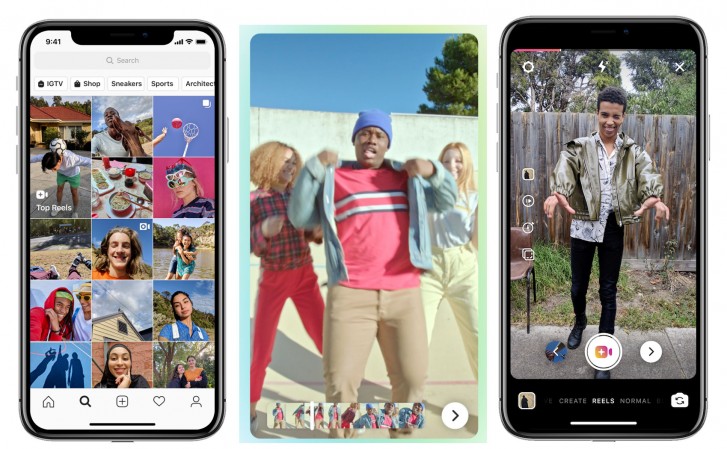It’s no secret that if there’s a popular app or feature Facebook can’t buy, the company simply creates its own version. First it was Snapchat. Now, it’s TikTok.
In an attempt to steal the crown of best viral content generator, Instagram added a new feature called Reels. The video tool allows users to create short 15-second clips, with music and all that can be uploaded to their Stories.
News of the feature comes almost a month after Facebook CEO Mark Zuckerberg, expressed censorship concerns over TikTok during a speech at Georgetown University. It also comes only a little over a year after the tech giant dropped Lasso, Facebook’s first attempt at creating a TikTok clone. But rather than having to download an entirely separate app, the company plugged a similar tool into Instagram — an app you probably already spend hours a day scrolling through anyways.
Based on the demo video, the feature looks simple to use. Swipe to the right on the Instagram app and you’ll find Reels nestled among Boomerang and Super-Zoom modes within Stories. You can either record your short clip in silence (if that’s your thing) or choose a song from Instagram’s music library. Additionally, you can also pull audio from other public Reels.
Reel’s editing tools aren’t as extensive as TikTok’s … yet. You can adjust the speed of your video, add captions, and overlay scenes for smoother transitions. When you’re done, you can upload your masterpiece to Stories, Close Friends, add it to your Highlights, or send it to someone via a Direct Message. In an effort to encourage viral hits, public Reels have the chance to land on the Top Reels section in the Explore tab.
“Instagram Stories has always been a home for expression and we believe this new format has huge potential to enable more creativity for people,” Robby Stein, director of product at Instagram, said.
But don’t get too excited. While available on Android and iOS, Instagram confirmed Reels is only being tested in Brazil for now, with plans to incorporate user feedback to improve the feature over time.
